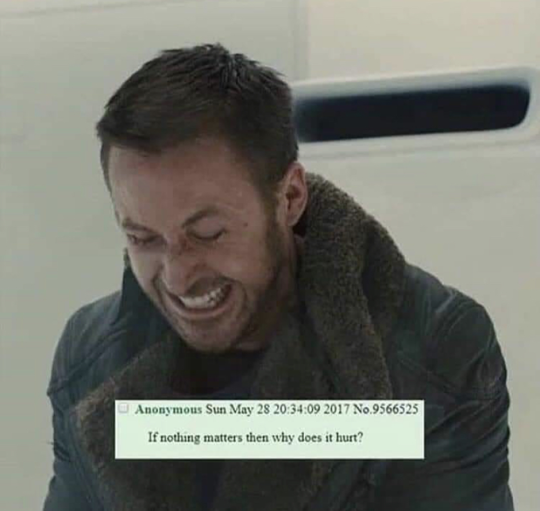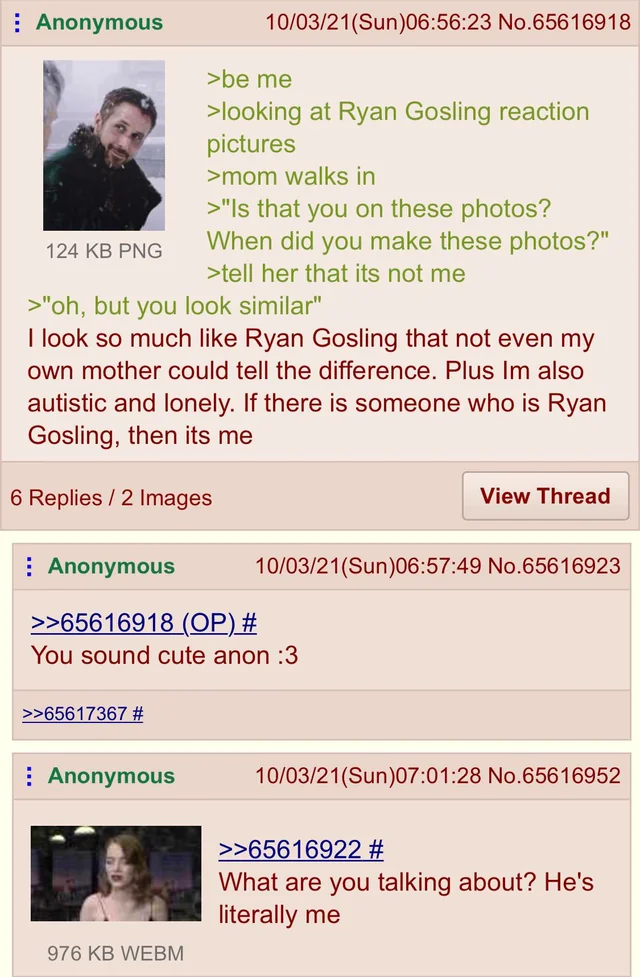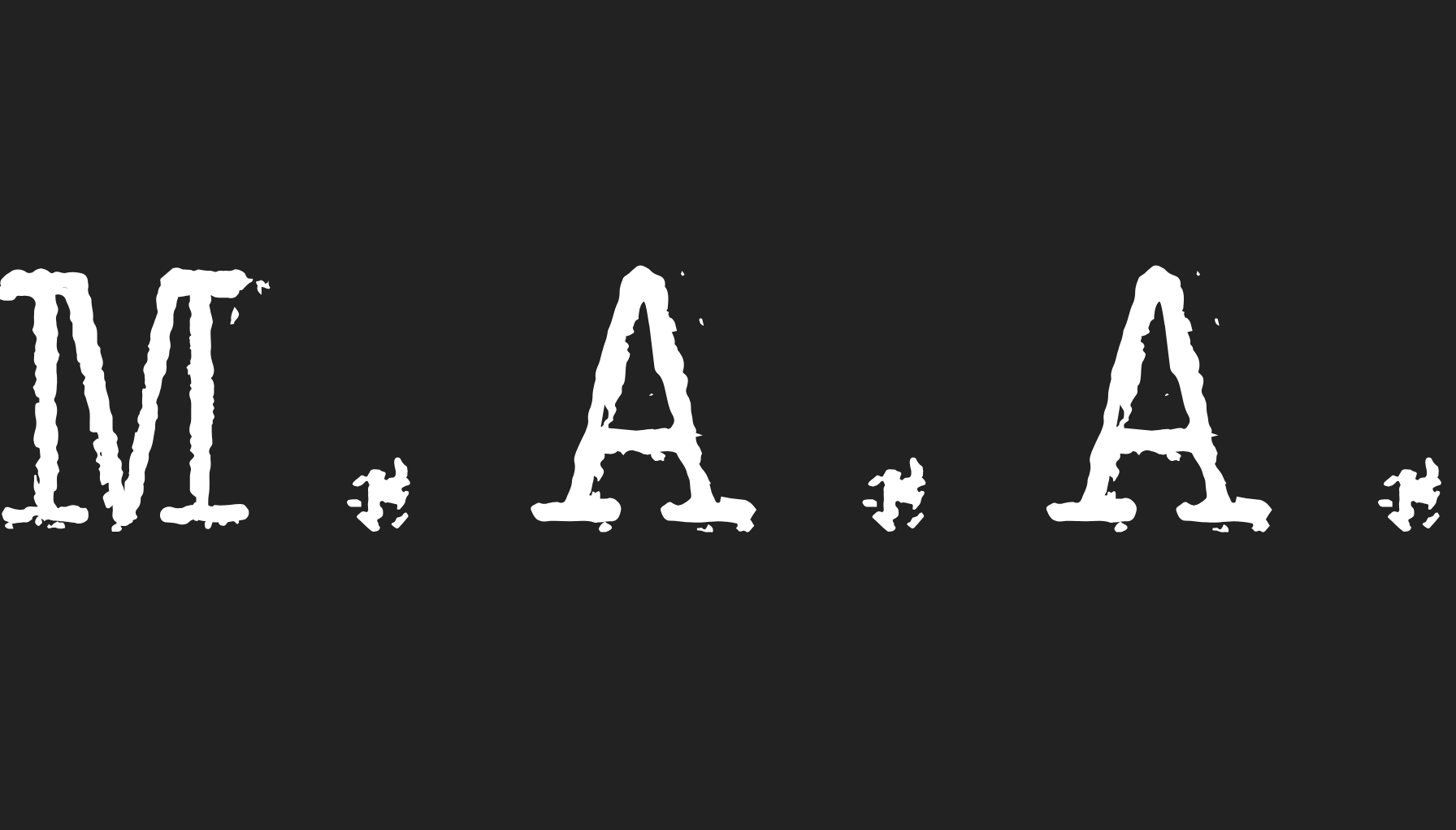The Authenticity of Simulacrum: Blade Runner 2049: the Individual, the Society, and Humanity
Blade Runner 2049 is a film pulled in different directions by the arguments it makes and the aspects to consider depending on the referent point of the film. This changes at various points because of it being pulled in different directions by the strong acting by Ryan gosling (individual focused), the source material (more humanity focused for the book and more society focused for the first movie) and the point of view of the director Dennis (more society focused while also highlighting Gosling as a character within it). But the genius of the movie is that each element communicates with the one above / below it, although at times it can feel jarring due to the wide amount of thematic ideas. Main question asked by this movie is: how do we separate the real from the simulacrum (basically a replication that has no inherent truth to it- Google Wikipedia, or a simulation that is devoid of reality). Even moreover, what happens when the simulacrum becomes more real than reality? This is all done through a cyberpunk aesthetic and world which has the benefit of giving easy plot / symbolic devices to make these points (cybernetics, environmental collapse, mass marketing). See my paper on an imagined cyberpunk adaptation of Shakespeare to learn more about my analysis of link
Baudrillard says:
Le simulacre n'est jamais ce qui cache la vérité – c'est la vérité qui cache qu'il n'y en a pas. Le simulacre est vrai.
Simulacrum is never what hides truth- it is truth that hides that there isn’t any (truth). The simulacrum is real.
The simulacrum is a level past the imitation, which tries to be a copy of reality. While the imitation copies an aspect of what is real, the simulacrum copies the aspects of the imitation. This is applied to the three referents of society analyzed in the film. Although these feel jarring, they (attempt) to form a cohesive whole. As above, so below.
Ryan Gosling, the simulacrum of masculinity, and the effect of the internet:
The first referent that the film seeks to analyze is the individual, and more specifically the male individual. Ryan Gosling clearly has a streak of acting that represents disaffected men in society and his popularization on the internet has moved the common understanding of the movie in this direction (although he claims not to represent or support this). While this is only one of at least three strata the movie seeks to portray, they each enter in contact with one another in turns of thematic links. Vertically from smallest to largest: a man must interact with society, a society is a product of humanity, but also descending: human nature informs society, society bears upon the man.
From the referent of the individual, this story is a failed Pinocchio story: a creation trying to become human. It is the quest for humanity that is at the core of this arc. The male viewer has such an obsession and empathetic understanding for this condition because K’s struggle is essentially one of individuation in an extremely solitary environment that is actively hostile to the expression of his feelings or desire (a situation most men find themselves trapped in from the age of 13). Thus, to the male viewer’s reception, this quest for humanity mirrors his own quest for authenticity, sincerity, and society’s inability to grant this. While K quests for a simulacrum of humanity, I believe many men chase the simulacrum of masculinity / authenticity (produced by Ryan’s acting). Both try to appear to be as close to their ideal as possible which ultimately leads to emotional turmoil and blockage. However, it is society’s inability to process them that is at least partially at fault. However, the ending of the movie may speak to a stoic transcendence of this quest, or an emotionally childish abdication and failure to individuate.
Some of the most popular memes shared online include the scene where Gosling seethes in a frustrated manner and when he is approached by a massive hologram of his digital girlfriend that was destroyed. Given how widely they are shared on the internet, it is clear they possess potent emotional power or are at least a widely shared experience of the (post)-modern male consciousness. These speak to two key male anxieties / experiences (the second one will be discussed under the next section). When Ryan / K screams in the white room. In the movie, this scene is his reaction to understanding that his most cherished memories are in fact implanted and not authentically his own. This means he is not human, but a replicant, and has failed on his own quest towards humanity that he was constructing in his mind. Pulled out of the context of the movie, however, the clip has become its own simulacrum for the experience of the failure to reach authenticity (common examples pulled below). The clip, removed from the reality of the film, or even the imitation of a film, is a simulacrum itself for the emotional experience of the film. What is this experience to the male viewer? It is the feeling of being emotionally blockaded, by oneself or one’s society, having the crushing desire of wanting to be human or authentic by being blocked, interdicted, by the virtue of one’s being, or perhaps of one’s own internal failure. The complexity of this film however is the grey zone between the affirmation of the simulacrum as real (the post-modern mode) or the individualist obligation to make one’s self real. I do believe that the film argues that through the struggle K (not Ryan) goes through to become human, this mad act of achievement in itself grants him his humanity, or the inability to see outside the cold constraints of logic. I wonder, however, how the simulacrum of Ryan in the eyes of the male viewer can transcend: are men able to become authentic merely by striving for it in good faith? Is their simulacrum of masculinity and authenticity itself a new kind of being in this (post)-modern age? Or are (post)-modern men condemned to be replicants of the ideals we espouse (and that are espoused to us), unable to climb the mountain of the ideal (and the follow up question would be whose fault this is)? The “literally me” tagline is itself a simulacrum. Ryan’s acting becomes a greater part of the male viewer’s identity, than his own actual identity- the simulacrum becomes greater than the referent, more authentic, more feeling, more personal, more representative. Just as K’s own struggle to become human makes him more human than the unfeeling humans.
Society: manufacturing the simulacrum of pleasure and love through the all-consuming market
The second referent of Blade Runner 2049 is mainly constructed and communicated through the atmospheric construction, the regard of director Denis Villeneuve, and common cyberpunk tropes. The social question that the film asks about this referent level is how the market creates simulacrums of social constructions, mainly romantic ones. This is a critical stake in our current society given the proliferation of online tools to replicate the natural formation of relationships (remember that trees no longer exist in this society and finding one is a significant rarity, even oddity), such as dating apps and social media. While these steps represent imitations in the scale from reality to imitations to simulacrum, the cyberpunk aesthetic asks the logical conclusion of the slow “simulacrumization” of features of society. Love in Bladerunner 2049, through the eye of Villeneuve that creates an image of this society, is principally something bought and sold. This is done either through prostitution or the digital simulacrum of love, such as the Joi product.
2049’s LA is a proliferation of market forces that try to approximate every desire available to the human. The visual landscape of the city is awash in advertising and public spaces are physically dominated by massive women. As said earlier, this speaks to a key male fear of being dominated by desire and the inability to control one’s impulses. This is a struggle K tries (and fails) to overcome as he becomes more and more emotionally dependent on Joi. The result of this is the wholesale subjugation of his humanity and loving instinct to an unfeeling product, as the final scene where he is visually dominated by a pink mass with dark, cold eyes. Feelings of otherness and alienation are enhanced by the use of foreign languages, a common trope in the cyberpunk genre beginning in the 80s which speaks to continuing fears of being dominated by foreign cultures through economic depassement (of Japan, of China) or of widespread immigration.
However, unlike the features of a normal society, the market is not a creative force but one that destroys. It seeks to continually transfer to the profit motive the things that engender a society: love, social relations, basic needs. The mass amount of destruction, oppression, slavery, waste, and environmental degradation is a visual reminder that constant consumption does not create new things to be bought but sells new desires that accelerate the destruction of what was. Denis Villeneuve’s tendency towards the cinematically grand enhances this by giving wide shots of total economic / environmental decay.
The ironic twist of this story is how love still flourishes from the destructive, profit-minded simulacrums. The most love shown in the story is likely that of the prostitute for K, who ultimately saves him (since he is a replicant, I doubt there is much other motive, although the fact that he knows about the miracle of the birth is likely significant). K, however, is still deeply enamoured by her digital counterpart. From the market based-simulacrum of prostitution still blooms some flower of love, however. Additionally, on the social level, some of the healthiest societies seem to flourish amidst the crucible of the market’s destruction: the trash-dwelling tribe seems fairly functional, while the inner-city seems to be a massive hive of decay or individually trapped within their roles (the police chief, Wallace or his employees).
Humanity: cells interlinked and the simulacrum of divinity
The Biblical story of Rachel tells how after becoming jealous of her sister, is finally able to conceive and gives birth to Joseph, a leader of one of the tribes of Israel. The final component of this story is the human desire through technology to manufacture a simulacrum of divinity (in my mind, divinity is what proceeds original creation). Wallace is obsessed with expanding the human will throughout the stars and attempts to play at god to come to this reality. For this end, he manufactures more and more advanced simulacrums of humanity… which are ultimately unable to conceive because they are too bound in the pursuit of logic. It is only the absurd, or perhaps the divine, that seems to enable a less advanced replicant, alongside the will of seemingly inhuman beings, to create a new child. Furthermore, the progeny of this pair is a skilled manufacturer of simulacrum memories, one of the most inherent human qualities.
As in the Bible, Rachael was granted the means to create a new tribe of Israel, a new tribe of replicants that will prove their own humanity as cells interlinked. This calls back K’s baseline, or his dehumanizing mantra made to reset him emotionally / spiritually, that is essentially a descriptor of humanity: cells interlinked. However, the pursuers of perfect simulacrum, such as Wallace, are spiritually infertile to create new procreation: it is only possible through a miracle spawned by simulacrum of worse quality (previous remnants), and so from the simulacrum of divinity comes something new.
April 18, 2025

Example 1: a man struggling to meet the ideal of a romantic lover resorting to simulacrum

Example 2 /3: others struggling to understand simulacrum, someone coping with it Honestly, it might just be that we are all autistic and the robot theme is just representing this…

